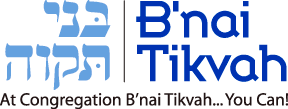After the Torah reading, the person who has been given the aliya recites a blessing that thanks G-d for giving us the “Torah of truth” and “planting within us (or among us) eternal life.”
The expression “Torah of truth” is not simply a rephrasing of the idea that the Torah is true. “Truth” is another name for G-d. The “Torah of truth” (or perhaps the “Torah of Truth, capital T) is a synonym for “Divine Torah.” This doesn’t mean that the Torah is itself divine. That would be perilously close to idolatry. But it does mean that the Torah is as close as we come to divine authority. Hence the symbolism of the crowns, breastplates, lions of Judah, and more on the regalia we use to adorn the Torah scrolls.
Just as intriguing as the idea that by receiving the Torah we are getting the “Torah of Truth,” is the idea that by giving us Torah, G-d has planted within (or among) us eternal life. First, it’s hard to hear this phrasing without thinking of the Tree of Life in the Garden of Eden. This is reinforced by the expression used for the handles around which the Torah scroll is wrapped—“atzei chayim” literally, “Trees of Life.” And when we are putting the Torah away, we recite “It is a tree of life to those who hold it…”.
Second, the ambiguity of within vs. among is very telling. If it means “within,” it implies a level of personal spirituality. G-d has given us the idea-world of the Torah, and that will shape our spiritual life. It allows us to connect to the Divine, and the Eternal. If it means among, it implies that our spirituality is not individual, but rather collective. By living in a community that shares Torah values, a sacred congregation, we create something greater than ourselves, something that will live on long after we personally are gone.
The ambiguity, of course, means that it’s both!
And finally, this blessing concludes like the previous blessing—“notain hatorah,” Who gives us the Torah anew every single time.”
